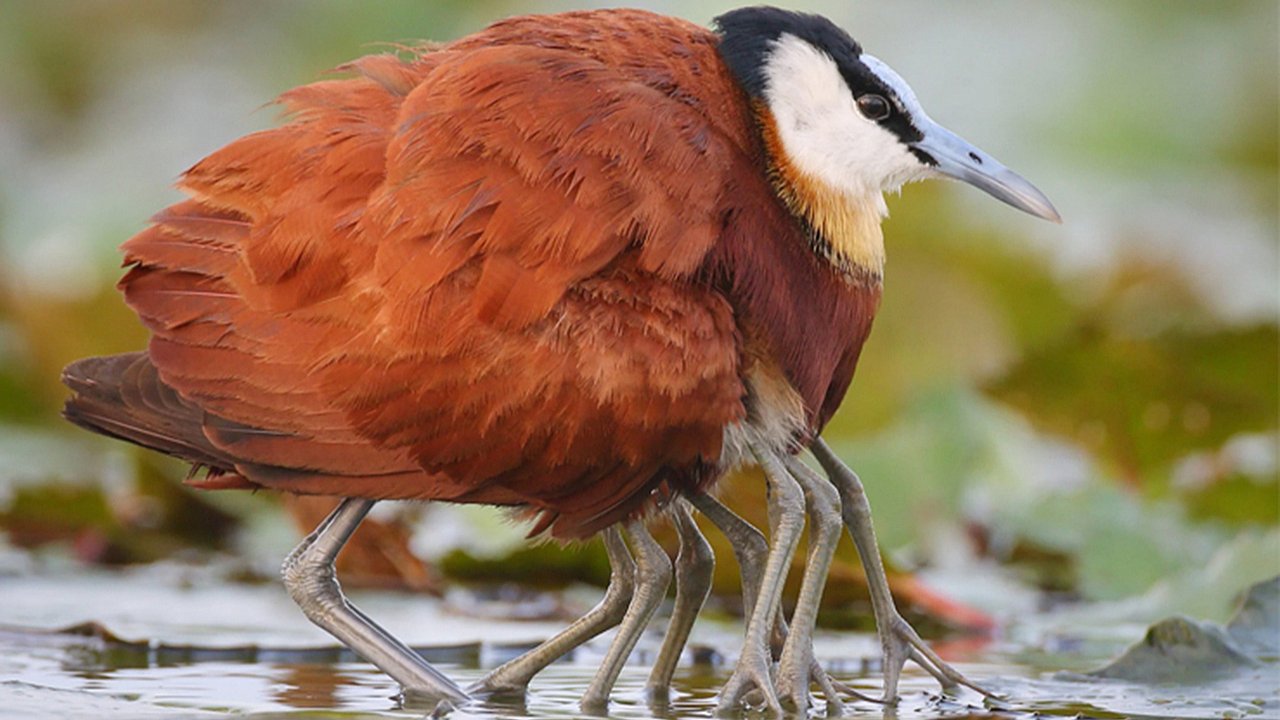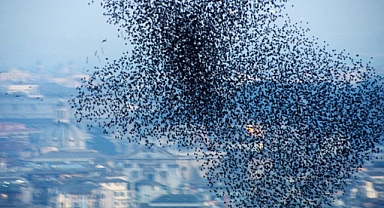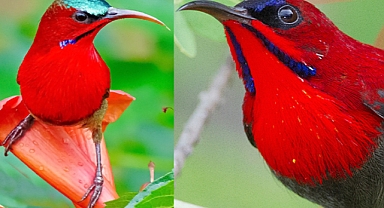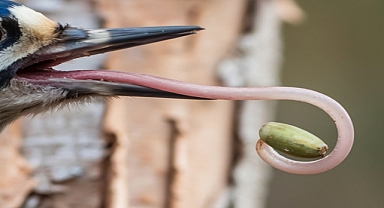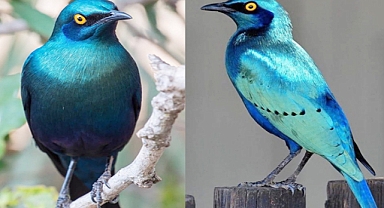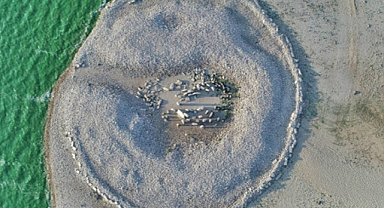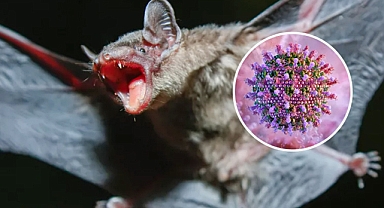The African Jacana: Nature's Master of Illusion and Balance
Africa is home to some of the most extraordinary creatures, but the African Jacana stands out not for vibrant plumage or distinctive songs, but for its seemingly bizarre legs. Nicknamed the ‘Jesus bird’ for its ability to seemingly walk on water, this wading bird showcases evolution at its finest, with curious adaptations that help it thrive in wetland environments.At first glance, photographs of the jacana in its natural habitat can appear unsettling, as the bird often looks like it has far too many legs. But the truth behind this illusion is far from eerie—it’s an ingenious example of nature’s design. Prepare to be amazed as we unravel the mysteries of this extraordinary bird and its remarkable survival strategies.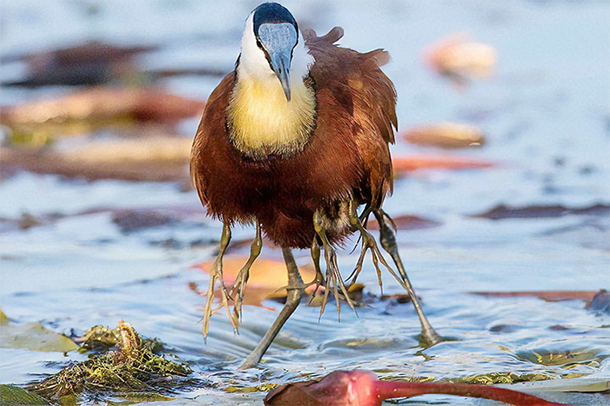 Walking on Water: The Secret Behind Jacanas' Large Feet
Walking on Water: The Secret Behind Jacanas' Large Feet
The African Jacana inhabits shallow lakes and wetlands across sub-Saharan Africa. With long toes and elongated claws, this bird can evenly distribute its weight across floating vegetation, like lily pads. These oversized feet allow the jacana to glide gracefully over water surfaces in search of insects, crustaceans, and other wetland prey. While their diet isn’t unusual, their ability to walk on water makes them truly exceptional.Jacanas are found not only in Africa but also in parts of Asia, Australia, and Central and South America. Measuring between 6 to 23 inches (15 to 58 cm) long, they are easily recognizable by their striking plumage. African Jacanas are distinguished by chestnut-brown bodies, a black crown and eyestripe, and a blue beak with a matching forehead shield. Their slender legs, tinted grey-blue, further emphasize their delicate appearance.
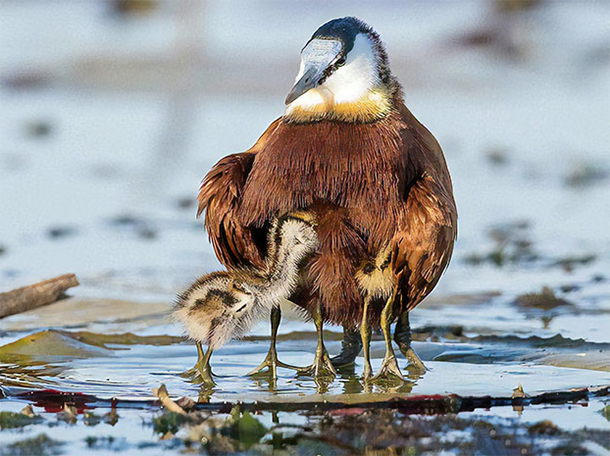 An Evolutionary Illusion: The Multi-Legged Mystery
An Evolutionary Illusion: The Multi-Legged Mystery
Many curious onlookers have been puzzled by photographs showing what seems like multiple legs dangling beneath a jacana in flight. However, the explanation is surprisingly charming. The "extra" legs aren’t the bird’s at all—they belong to its young!Male jacanas, which take on the primary parenting role, carry their chicks under their wings when danger arises. When the bird lifts off or moves quickly, the chicks' legs can be seen hanging beneath the parent’s body, creating the illusion of a multi-legged creature. This amusing visual trick exemplifies evolution’s cleverness, offering both camouflage and protection.Unconventional Parenting: Male Jacanas as Dedicated Fathers
Unlike many bird species where females bear the primary responsibility for raising offspring, the jacana follows a different script. After laying eggs, the female leaves the nest, entrusting the male to care for the young. This polyandrous arrangement—where one female mates with multiple males—is rare among birds but ensures the survival of the species.Male jacanas incubate the eggs by tucking them under their wings, creating a warm, safe environment. Once the chicks hatch, the father remains vigilant, ready to protect them from a host of predators, including crocodiles lurking in the wetlands. When threatened, the father signals the chicks to climb under his wings, then swiftly transports them to safety. This behavior often leads to humorous photos, with the chicks’ legs dangling from the parent’s body like an amusing tangle of limbs.
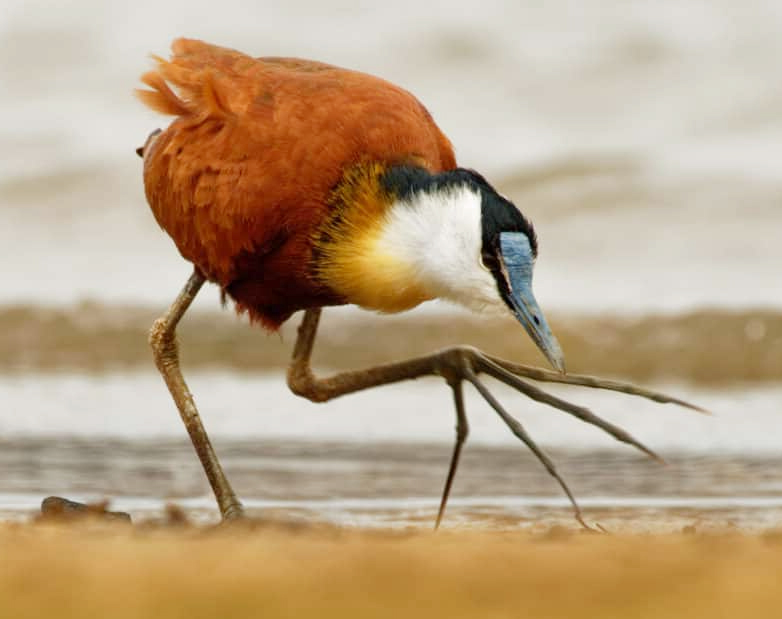 Thriving in the Wild: A Success Story
Thriving in the Wild: A Success Story
Despite the challenges of raising chicks in predator-rich environments, jacanas have thrived. With a wide distribution and a stable population, these birds are not considered endangered. Their success in various wetland habitats speaks to their remarkable adaptability.The jacana’s ability to thrive is a testament to the intricate balance of nature, where even seemingly whimsical traits, like carrying young beneath wings, serve a vital purpose. This survival strategy not only provides protection but also highlights the ingenuity of evolution in the natural world.
Africa is home to some of the most extraordinary creatures, but the African Jacana stands out not for vibrant plumage or distinctive songs, but for its seemingly bizarre legs. Nicknamed the ‘Jesus bird’ for its ability to seemingly walk on water, this wading bird showcases evolution at its finest, with curious adaptations that help it thrive in wetland environments.At first glance, photographs of the jacana in its natural habitat can appear unsettling, as the bird often looks like it has far too many legs. But the truth behind this illusion is far from eerie—it’s an ingenious example of nature’s design. Prepare to be amazed as we unravel the mysteries of this extraordinary bird and its remarkable survival strategies.
 Walking on Water: The Secret Behind Jacanas' Large Feet
Walking on Water: The Secret Behind Jacanas' Large FeetThe African Jacana inhabits shallow lakes and wetlands across sub-Saharan Africa. With long toes and elongated claws, this bird can evenly distribute its weight across floating vegetation, like lily pads. These oversized feet allow the jacana to glide gracefully over water surfaces in search of insects, crustaceans, and other wetland prey. While their diet isn’t unusual, their ability to walk on water makes them truly exceptional.Jacanas are found not only in Africa but also in parts of Asia, Australia, and Central and South America. Measuring between 6 to 23 inches (15 to 58 cm) long, they are easily recognizable by their striking plumage. African Jacanas are distinguished by chestnut-brown bodies, a black crown and eyestripe, and a blue beak with a matching forehead shield. Their slender legs, tinted grey-blue, further emphasize their delicate appearance.
 An Evolutionary Illusion: The Multi-Legged Mystery
An Evolutionary Illusion: The Multi-Legged MysteryMany curious onlookers have been puzzled by photographs showing what seems like multiple legs dangling beneath a jacana in flight. However, the explanation is surprisingly charming. The "extra" legs aren’t the bird’s at all—they belong to its young!Male jacanas, which take on the primary parenting role, carry their chicks under their wings when danger arises. When the bird lifts off or moves quickly, the chicks' legs can be seen hanging beneath the parent’s body, creating the illusion of a multi-legged creature. This amusing visual trick exemplifies evolution’s cleverness, offering both camouflage and protection.Unconventional Parenting: Male Jacanas as Dedicated Fathers
Unlike many bird species where females bear the primary responsibility for raising offspring, the jacana follows a different script. After laying eggs, the female leaves the nest, entrusting the male to care for the young. This polyandrous arrangement—where one female mates with multiple males—is rare among birds but ensures the survival of the species.Male jacanas incubate the eggs by tucking them under their wings, creating a warm, safe environment. Once the chicks hatch, the father remains vigilant, ready to protect them from a host of predators, including crocodiles lurking in the wetlands. When threatened, the father signals the chicks to climb under his wings, then swiftly transports them to safety. This behavior often leads to humorous photos, with the chicks’ legs dangling from the parent’s body like an amusing tangle of limbs.
 Thriving in the Wild: A Success Story
Thriving in the Wild: A Success StoryDespite the challenges of raising chicks in predator-rich environments, jacanas have thrived. With a wide distribution and a stable population, these birds are not considered endangered. Their success in various wetland habitats speaks to their remarkable adaptability.The jacana’s ability to thrive is a testament to the intricate balance of nature, where even seemingly whimsical traits, like carrying young beneath wings, serve a vital purpose. This survival strategy not only provides protection but also highlights the ingenuity of evolution in the natural world.
